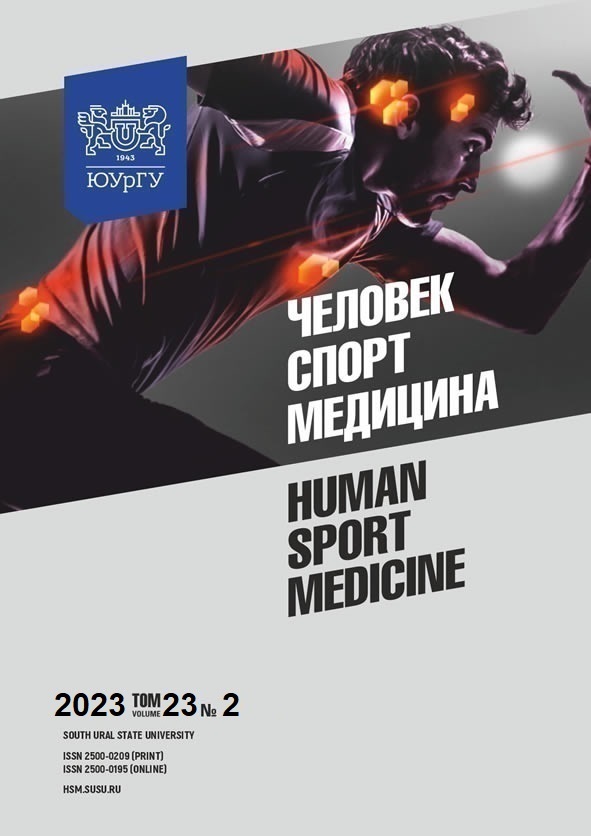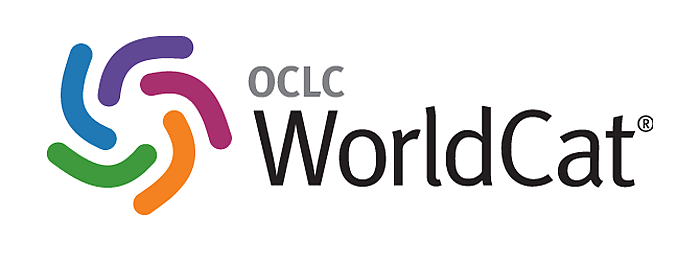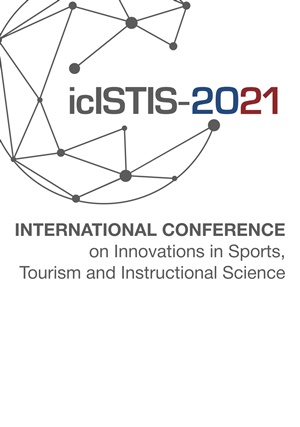ИСПОЛЬЗОВАНИЕ СЕЛЕНА ДЛЯ ПОДДЕРЖАНИЯ РАБОТОСПОСОБНОСТИ У ЭЛИТНЫХ СПОРТСМЕНОВ
Аннотация
Цель. Целью данного исследования было изучение влияния селена на физическую работоспособность элитных спортсменов в течение контрольных и подготовительных тренировочных мезоциклов. Материалы и методы. В исследовании приняли участие 44 профессиональных легкоатлета в возрасте 19,9 ± 0,21 года. В контрольную группу вошли 20 человек. Спортсмены экспериментальной группы (12 спортсменов) принимали добавку с содержанием селена в дозе 50 мкг в сутки в течение 21 дня интенсивных тренировочных нагрузок, такое же количество спортсменов вошло в группу участников, не получавших добавку. Спортсменов контрольной группы обследовали однократно, а спортсменов экспериментальной группы и группы без добавки – дважды: в начале исследования и через 21 день интенсивных тренировок. В ходе исследования регистрировали частоту сердечных сокращений, измеряли артериальное давление, определяли параметры вариабельности сердечного ритма и оценивали общую физическую работоспособность с помощью теста PWC170. Результаты. Показатели теста PWC170 выросли в 1,22 раза (P < 0,05), индекс Mo – в 1,1 раза (P < 0,05), а ∆RR – в 1,44 (P = 0,03) раза. Зарегистрировали снижение индекса стресса в 1,72 раза (P = 0,01). Заключение. Прием селенсодержащей добавки способствовал поддержанию физической работоспособности и регуляции сердечного ритма у спортсменов высокой квалификации в течение контрольных и подготовительных тренировочных мезоциклов.
Литература
2. Badtieva V.А., Pavlov V.I., Sharykin А.S. et al. An Overtraining Syndrome as Functional Cardiovascular Disorder Due to Physical Overload. Russian Journal of Cardiology, 2018, no. 23 (6), pp. 180–190. DOI: 10.15829/1560-4071- 2018-6-180-190
3. Baevsky R.M., Motylyanskaya R.E. Heart Rate in Athletes. Moscow, Physical Education and Sports Publ., 1986. 143 p.
4. Cardoos N. Overtraining Syndrome. Current Sports Medicine Reports, 2015, no. 14 (3), pp. 157–158. DOI: 10.1249/JSR.0000000000000145
5. Fernández-Lázaro D., Fernandez-Lazaro C.I., Mielgo-Ayuso J. et al. The Role of Selenium Mineral Trace Element in Exercise: Antioxidant Defense System, Muscle Performance, Hormone Response, and Athletic Performance. A Systematic Review. Nutrients, 2020, no. 12 (6), p. 1790. DOI: 10.3390/nu12061790
6. Flatt A.A., Esco M.R., Nakamura F.Y., Plews D.J. Interpreting Daily Heart Rate Variability Changes in Collegiate Female Soccer Players. The Journal of Sports Medicine and Physical Fitness, 2017, no. 57 (6), pp. 907–915. DOI: 10.23736/S0022-4707.16.06322-2
7. Gisselman A.S., Baxter G.D., Wright A. et al. Musculoskeletal Overuse Injuries and Heart Rate Variability: Is there a Link? Medical Hypotheses, 2016, no. 87, pp. 1–7. DOI: 10.1016/j.mehy.2015.12. 003. PMID: 26826630
8. Harty P.S., Cottet M.L., Malloy J.K., Kerksick C.M. Nutritional and Supplementation Strat-egies to Prevent and Attenuate Exercise-Induced Muscle Damage: a Brief Review. Sports Medicine Open, 2019, no. 5 (1), 1. DOI: 10.1186/s40798-018-0176-6
9. Karpman V.L., Belotserkovsky Z.B., Gudkov I.A. Testing in Sports Medicine. Moscow, Physical Education and Sports Publ., 1988. 208 p.
10. Kornyakova V.V., Badtieva V.A., Conway V.D. D-Ribose Intake Effectiveness for Improving Swimmer Functionality. Journal Physical Education and Sport, 2021, no. 21 (1), pp. 159–164. DOI: 10.7752/jpes.2021.01022
11. Kornyakova V.V., Badtieva V.A., Conway V.D. The Functional Readiness of Athletes from Cyclic Sports. Human. Sport. Medicine, 2020, no. 20 (1), pp. 128–134. DOI: 10.14529/hsm200116
12. Kolliari-Turner A., Oliver B., Lima G. et al. Doping Practices in International Weightlifting: Analysis of Sanctioned Athletes/Support Personnel from 2008 to 2019 and Retesting of Samples from the 2008 and 2012 Olympic Games. Sports Medicine – Open, 2021, no. 7 (1), p. 4. DOI: 10.1186/ s40798-020-00293-4. PMID: 33415428; PMCID: PMC7790029.
13. Makarova G.А. Sports Medicine. Moscow, Soviet Sport Publ., 2003. 480 p.
14. Mason S.A., Trewin A.J., Parker L., Wadley G.D. Antioxidant Supplements and Endurance Exercise: Current Evidence and Mechanistic Insights. Redox Biology, 2020, no. 35. DOI: 10.1016/ j.redox.2020.101471
15. Maynar M., Muñoz D., Alves J. et al. Influence of an Acute Exercise Until Exhaustion on Serum and Urinary Concentrations of Molybdenum, Selenium, and Zinc in Athletes. Biological Trace Element Research, 2018, no. 186, pp. 361–369. DOI: 10.1007/s12011-018-1327-9
16. Nakamura F.Y., Pereira L.A., Esco M.R. et al. Intraday and Interday Reliability of Ultra-Short-Term Heart Rate Variability in Rugby Union Players. Journal of Strength and Conditioning Research, 2017, no. 31 (2), pp. 548–551. DOI: 10.1519/JSC.0000000000001514
17. Tessier F., Margaritis I., Richard M.J. et al. Selenium and Training Effects on the Glutathione System and Aerobic Performance. Medicine and Science in Sports and Exercise, 1995, no. 27, pр. 390–396. DOI: 10.1249/00005768-199503000-00015
18. Tutelyan V.A., Samsonov M.A., Kaganov B.S. et al. Card Index of Dietary (Therapeutic and Preventive) Nutrition of Optimized Composition. Moscow, National Association of Clinical Nutrition Publ., 2008. 448 р.
19. Varlamova E.G. Microelement Selenium: Unique Properties Found in Nature, Key Functions of Selenium-Containing Compounds, Role in Health. Moscow, Rusains Publ., 2021. 88 р.
20. Varlamova E.G., Maltseva V.N. Micronutrient Selenium: Uniqueness and Vital Functions. Biophysics, 2019, no. 64 (4), pр. 510–521. DOI: 10.1134/S0006350919040213
References
1. Aubert A.E., Seps B., Beckers F. Heart Rate Variability in Athletes. Sports Medicine, 2003, no. 33 (12), pp. 889–919. DOI: 10.2165/00007256-200333120-00003. PMID: 129746572. Badtieva V.А., Pavlov V.I., Sharykin А.S. et al. An Overtraining Syndrome as Functional Cardiovascular Disorder Due to Physical Overload. Russian Journal of Cardiology, 2018, no. 23 (6), pp. 180–190. DOI: 10.15829/1560-4071- 2018-6-180-190
3. Baevsky R.M., Motylyanskaya R.E. Heart Rate in Athletes. Moscow, Physical Education and Sports Publ., 1986. 143 p.
4. Cardoos N. Overtraining Syndrome. Current Sports Medicine Reports, 2015, no. 14 (3), pp. 157–158. DOI: 10.1249/JSR.0000000000000145
5. Fernández-Lázaro D., Fernandez-Lazaro C.I., Mielgo-Ayuso J. et al. The Role of Selenium Mineral Trace Element in Exercise: Antioxidant Defense System, Muscle Performance, Hormone Response, and Athletic Performance. A Systematic Review. Nutrients, 2020, no. 12 (6), p. 1790. DOI: 10.3390/nu12061790
6. Flatt A.A., Esco M.R., Nakamura F.Y., Plews D.J. Interpreting Daily Heart Rate Variability Changes in Collegiate Female Soccer Players. The Journal of Sports Medicine and Physical Fitness, 2017, no. 57 (6), pp. 907–915. DOI: 10.23736/S0022-4707.16.06322-2
7. Gisselman A.S., Baxter G.D., Wright A. et al. Musculoskeletal Overuse Injuries and Heart Rate Variability: Is there a Link? Medical Hypotheses, 2016, no. 87, pp. 1–7. DOI: 10.1016/j.mehy.2015.12. 003. PMID: 26826630
8. Harty P.S., Cottet M.L., Malloy J.K., Kerksick C.M. Nutritional and Supplementation Strat-egies to Prevent and Attenuate Exercise-Induced Muscle Damage: a Brief Review. Sports Medicine Open, 2019, no. 5 (1), 1. DOI: 10.1186/s40798-018-0176-6
9. Karpman V.L., Belotserkovsky Z.B., Gudkov I.A. Testing in Sports Medicine. Moscow, Physical Education and Sports Publ., 1988. 208 p.
10. Kornyakova V.V., Badtieva V.A., Conway V.D. D-Ribose Intake Effectiveness for Improving Swimmer Functionality. Journal Physical Education and Sport, 2021, no. 21 (1), pp. 159–164. DOI: 10.7752/jpes.2021.01022
11. Kornyakova V.V., Badtieva V.A., Conway V.D. The Functional Readiness of Athletes from Cyclic Sports. Human. Sport. Medicine, 2020, no. 20 (1), pp. 128–134. DOI: 10.14529/hsm200116
12. Kolliari-Turner A., Oliver B., Lima G. et al. Doping Practices in International Weightlifting: Analysis of Sanctioned Athletes/Support Personnel from 2008 to 2019 and Retesting of Samples from the 2008 and 2012 Olympic Games. Sports Medicine – Open, 2021, no. 7 (1), p. 4. DOI: 10.1186/ s40798-020-00293-4. PMID: 33415428; PMCID: PMC7790029.
13. Makarova G.А. Sports Medicine. Moscow, Soviet Sport Publ., 2003. 480 p.
14. Mason S.A., Trewin A.J., Parker L., Wadley G.D. Antioxidant Supplements and Endurance Exercise: Current Evidence and Mechanistic Insights. Redox Biology, 2020, no. 35. DOI: 10.1016/ j.redox.2020.101471
15. Maynar M., Muñoz D., Alves J. et al. Influence of an Acute Exercise Until Exhaustion on Serum and Urinary Concentrations of Molybdenum, Selenium, and Zinc in Athletes. Biological Trace Element Research, 2018, no. 186, pp. 361–369. DOI: 10.1007/s12011-018-1327-9
16. Nakamura F.Y., Pereira L.A., Esco M.R. et al. Intraday and Interday Reliability of Ultra-Short-Term Heart Rate Variability in Rugby Union Players. Journal of Strength and Conditioning Research, 2017, no. 31 (2), pp. 548–551. DOI: 10.1519/JSC.0000000000001514
17. Tessier F., Margaritis I., Richard M.J. et al. Selenium and Training Effects on the Glutathione System and Aerobic Performance. Medicine and Science in Sports and Exercise, 1995, no. 27, pр. 390–396. DOI: 10.1249/00005768-199503000-00015
18. Tutelyan V.A., Samsonov M.A., Kaganov B.S. et al. Card Index of Dietary (Therapeutic and Preventive) Nutrition of Optimized Composition. Moscow, National Association of Clinical Nutrition Publ., 2008. 448 р.
19. Varlamova E.G. Microelement Selenium: Unique Properties Found in Nature, Key Functions of Selenium-Containing Compounds, Role in Health. Moscow, Rusains Publ., 2021. 88 р.
20. Varlamova E.G., Maltseva V.N. Micronutrient Selenium: Uniqueness and Vital Functions. Biophysics, 2019, no. 64 (4), pр. 510–521. DOI: 10.1134/S0006350919040213
Copyright (c) 2023 Человек. Спорт. Медицина

Это произведение доступно по лицензии Creative Commons «Attribution-NonCommercial-NoDerivatives» («Атрибуция — Некоммерческое использование — Без производных произведений») 4.0 Всемирная.















